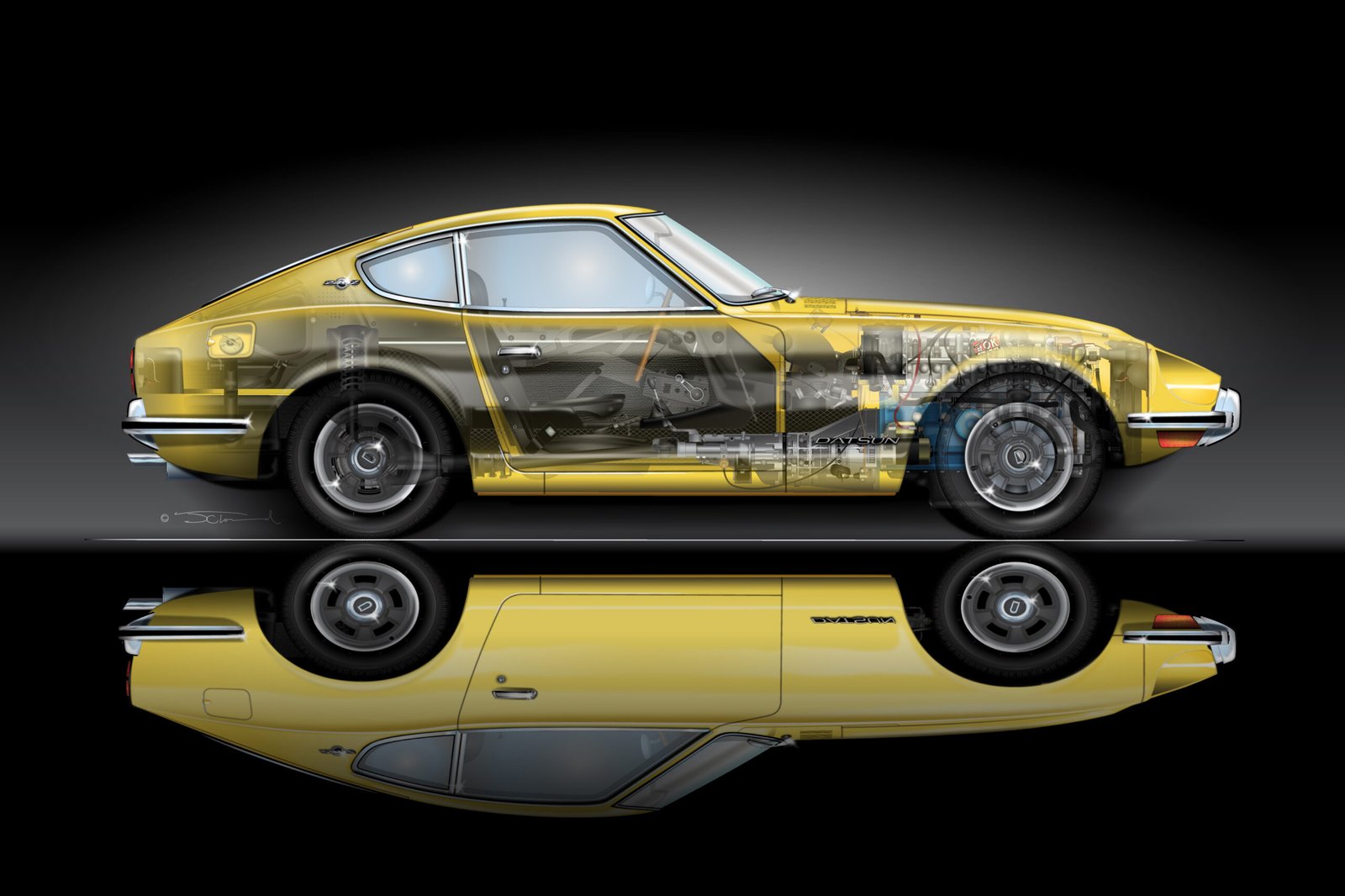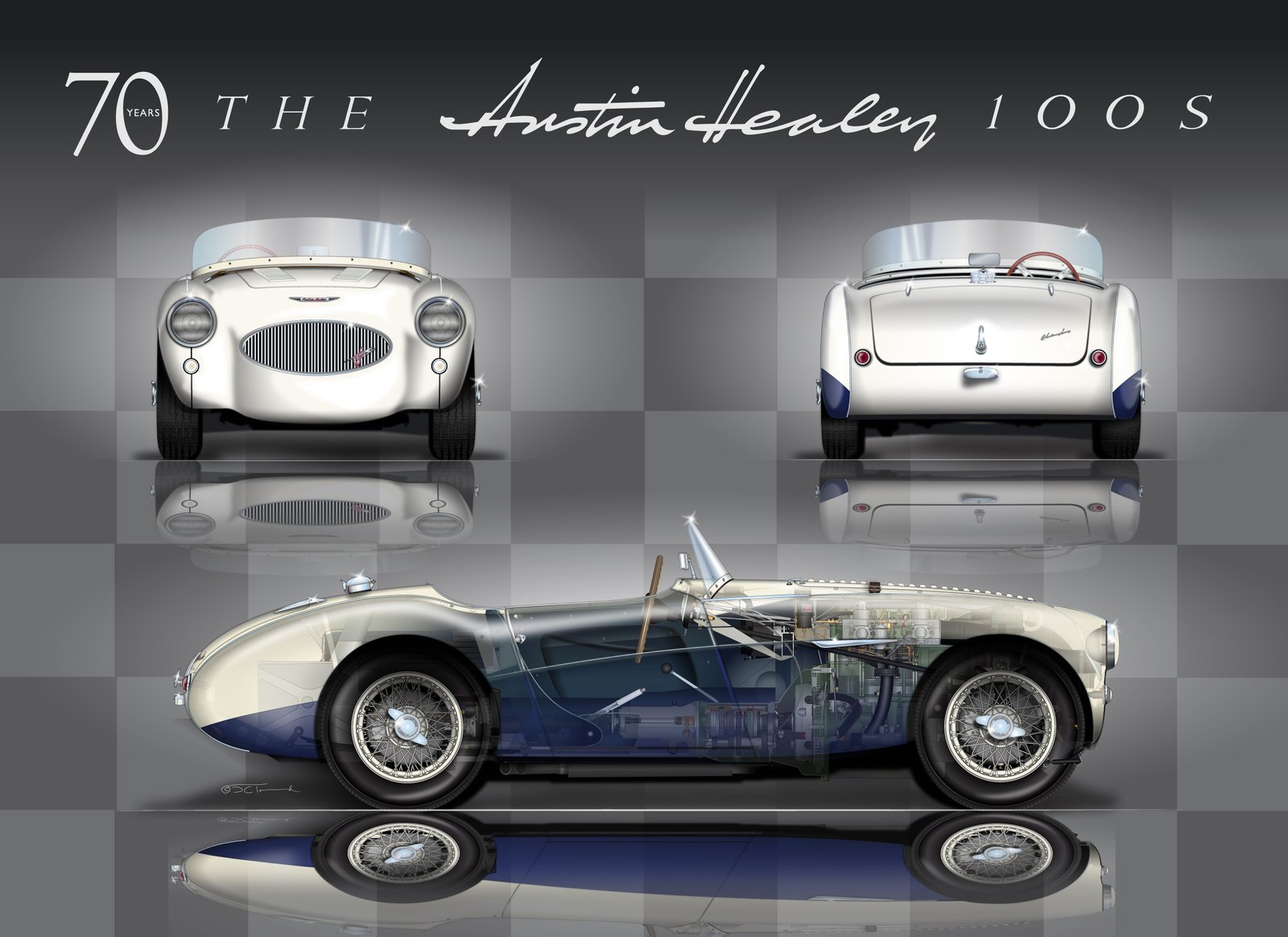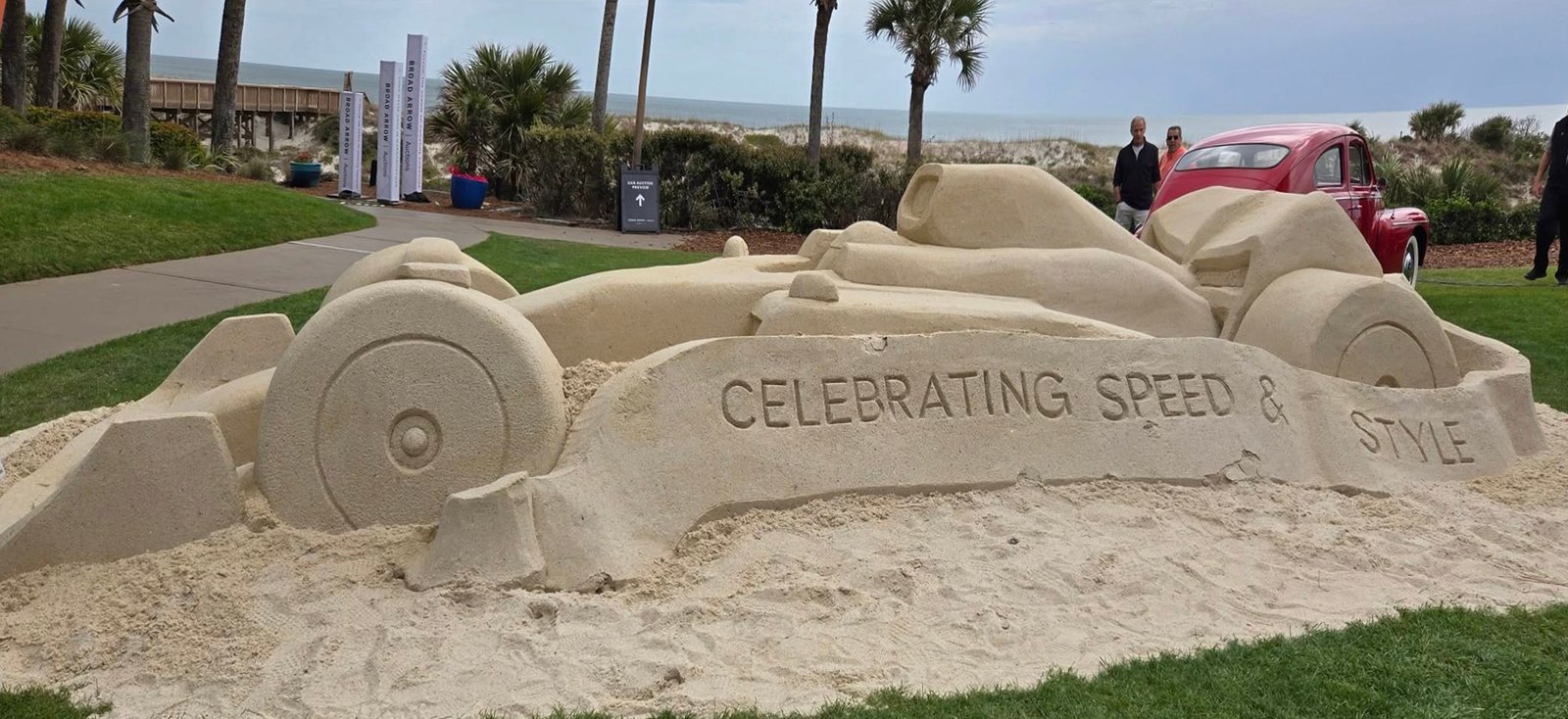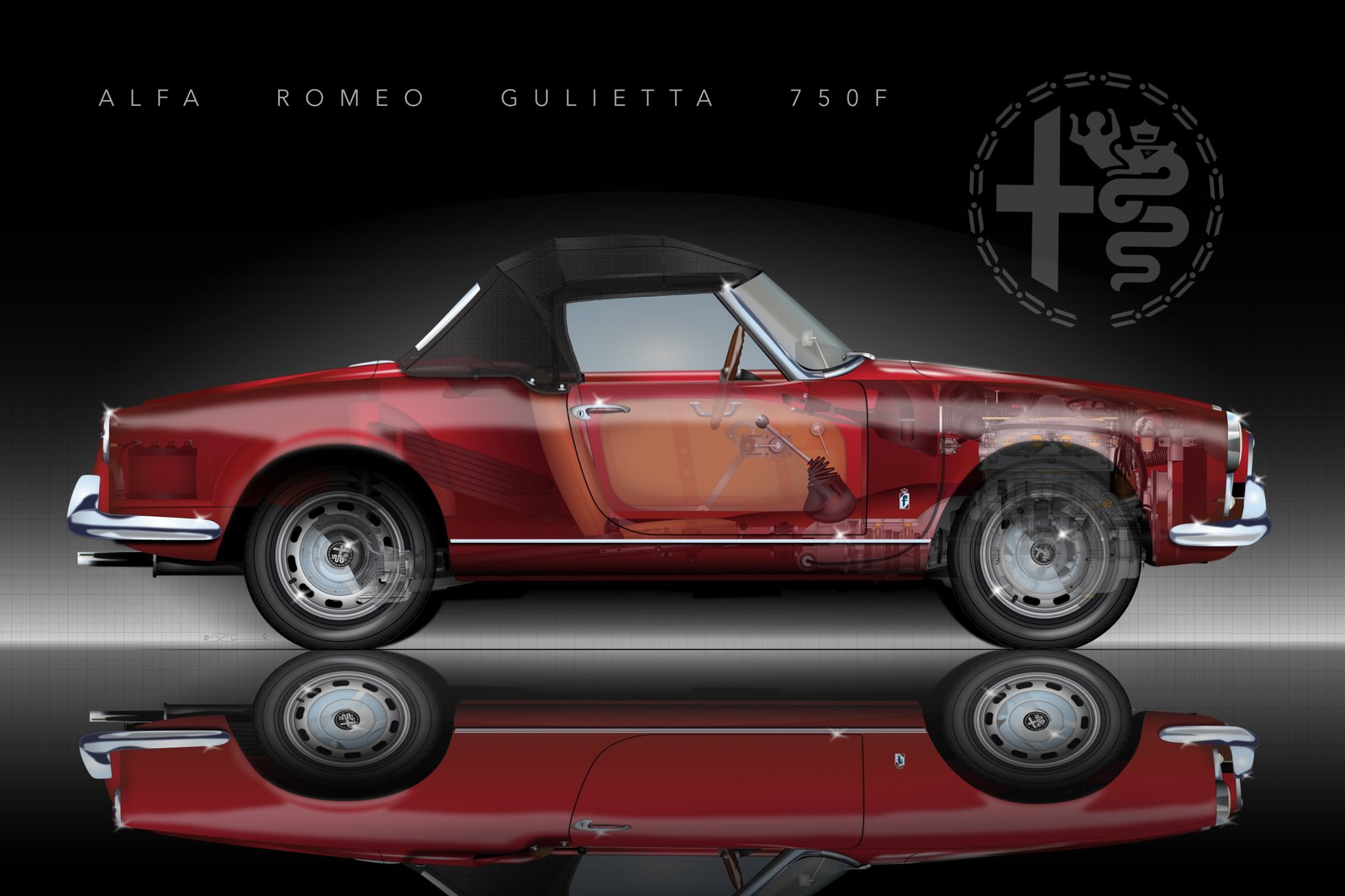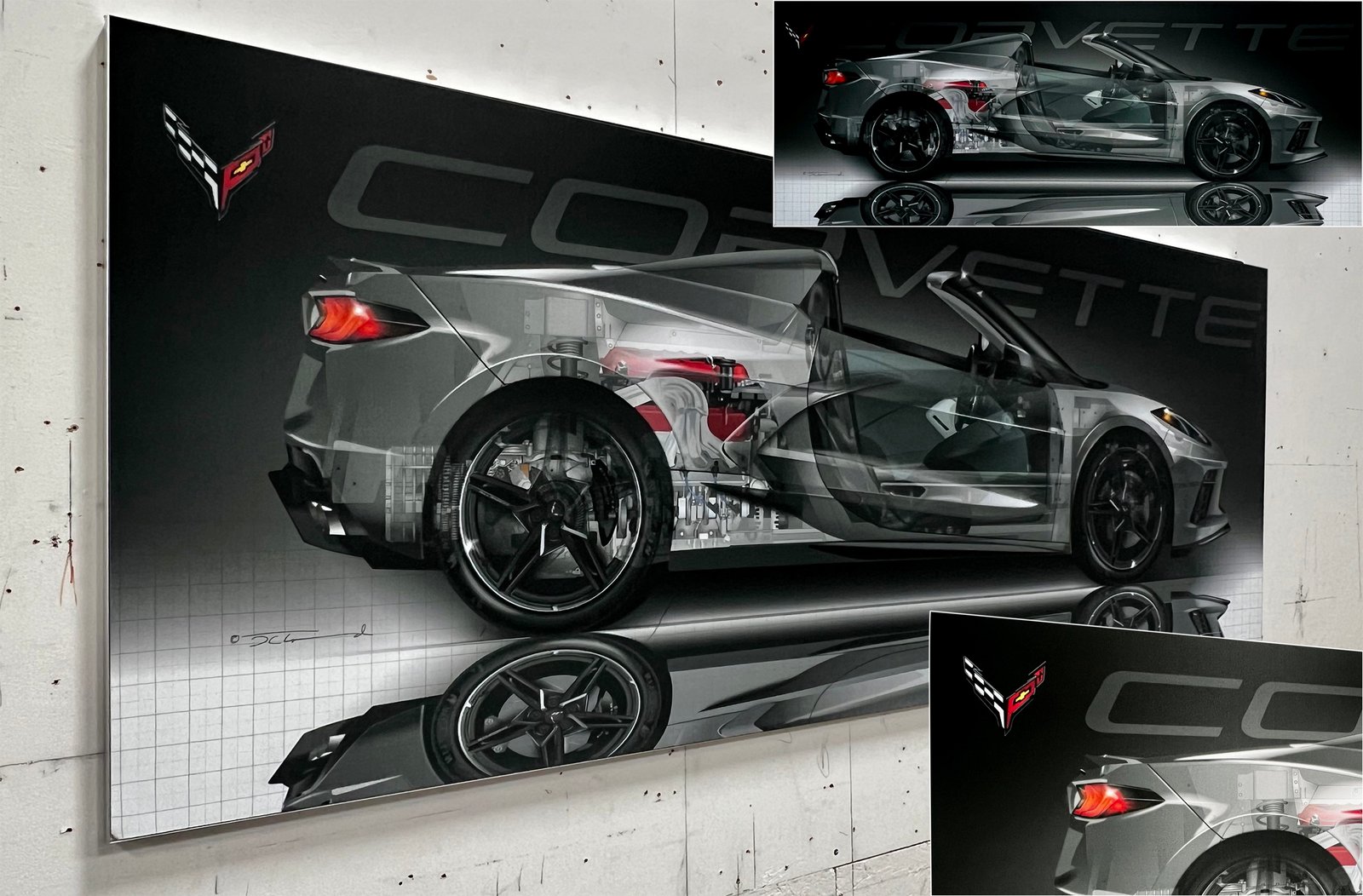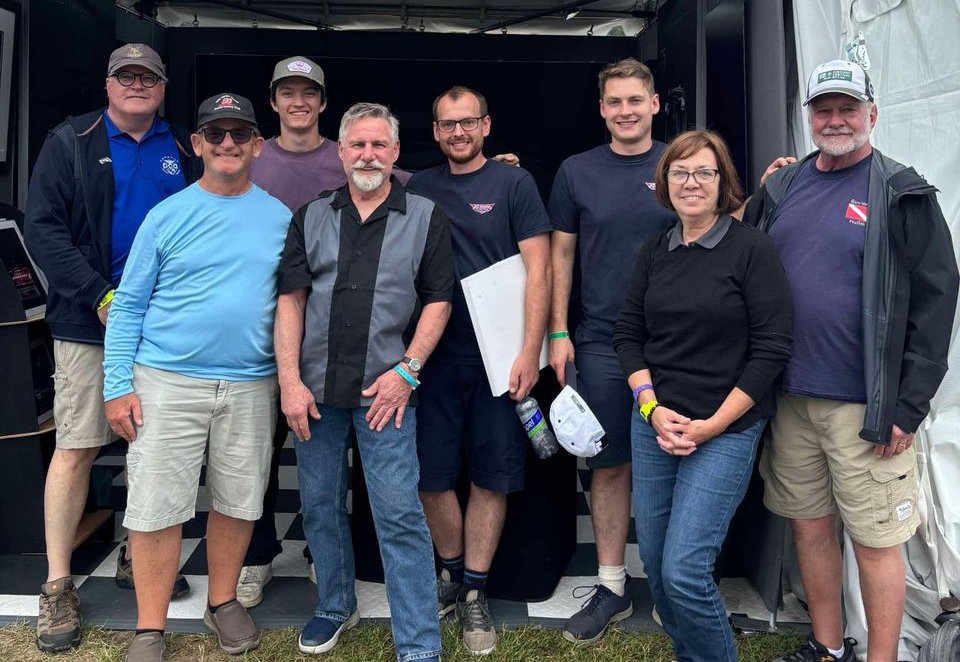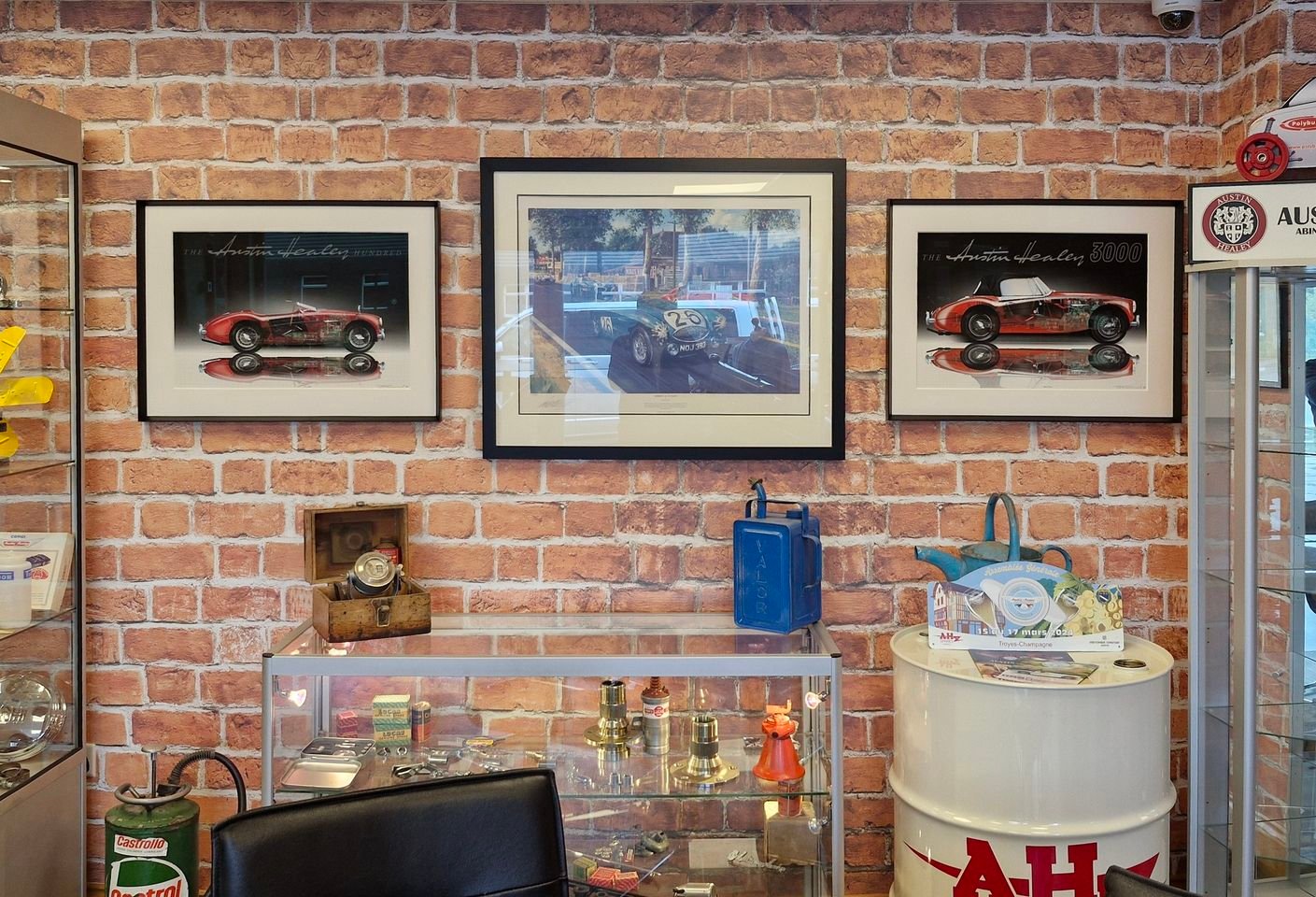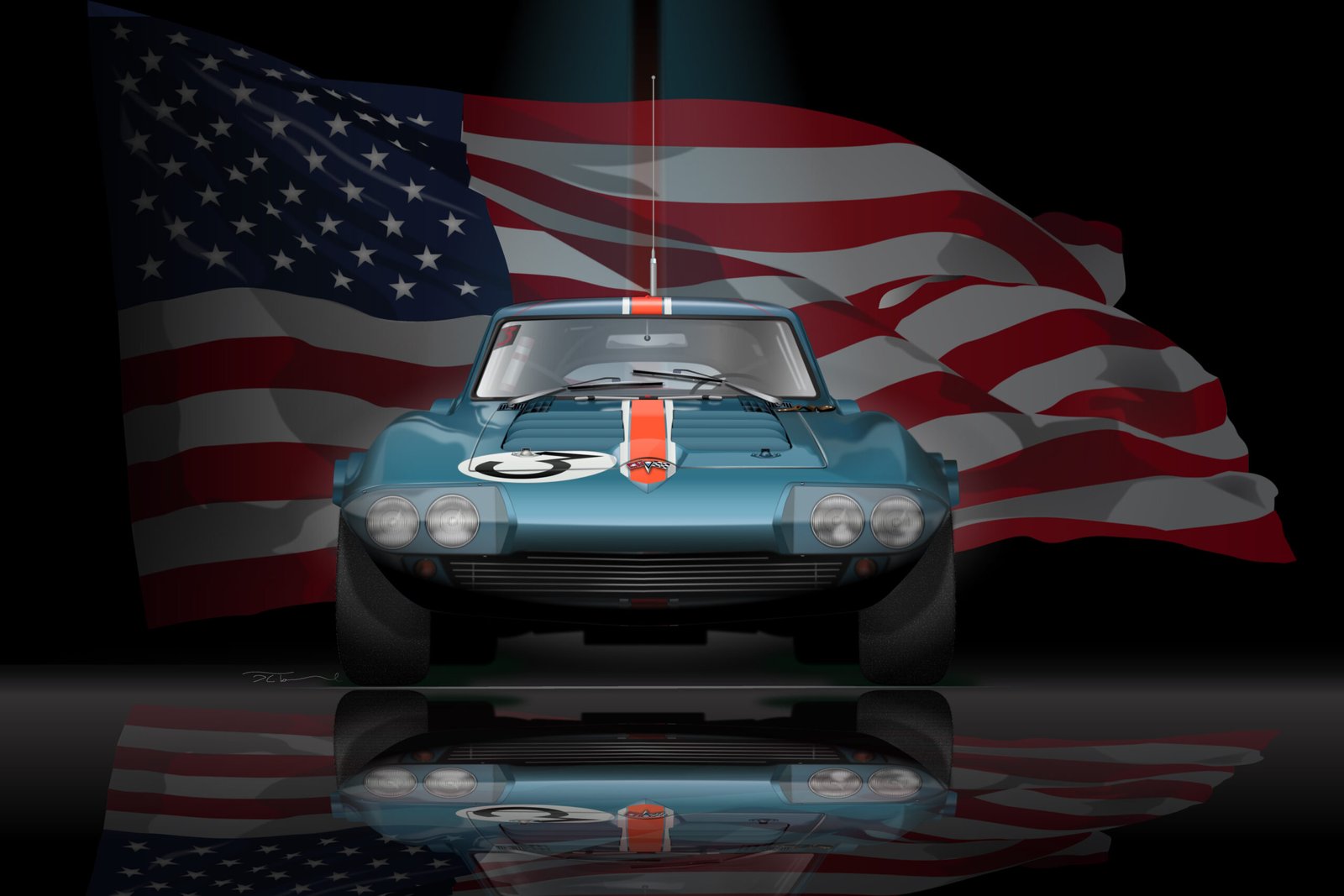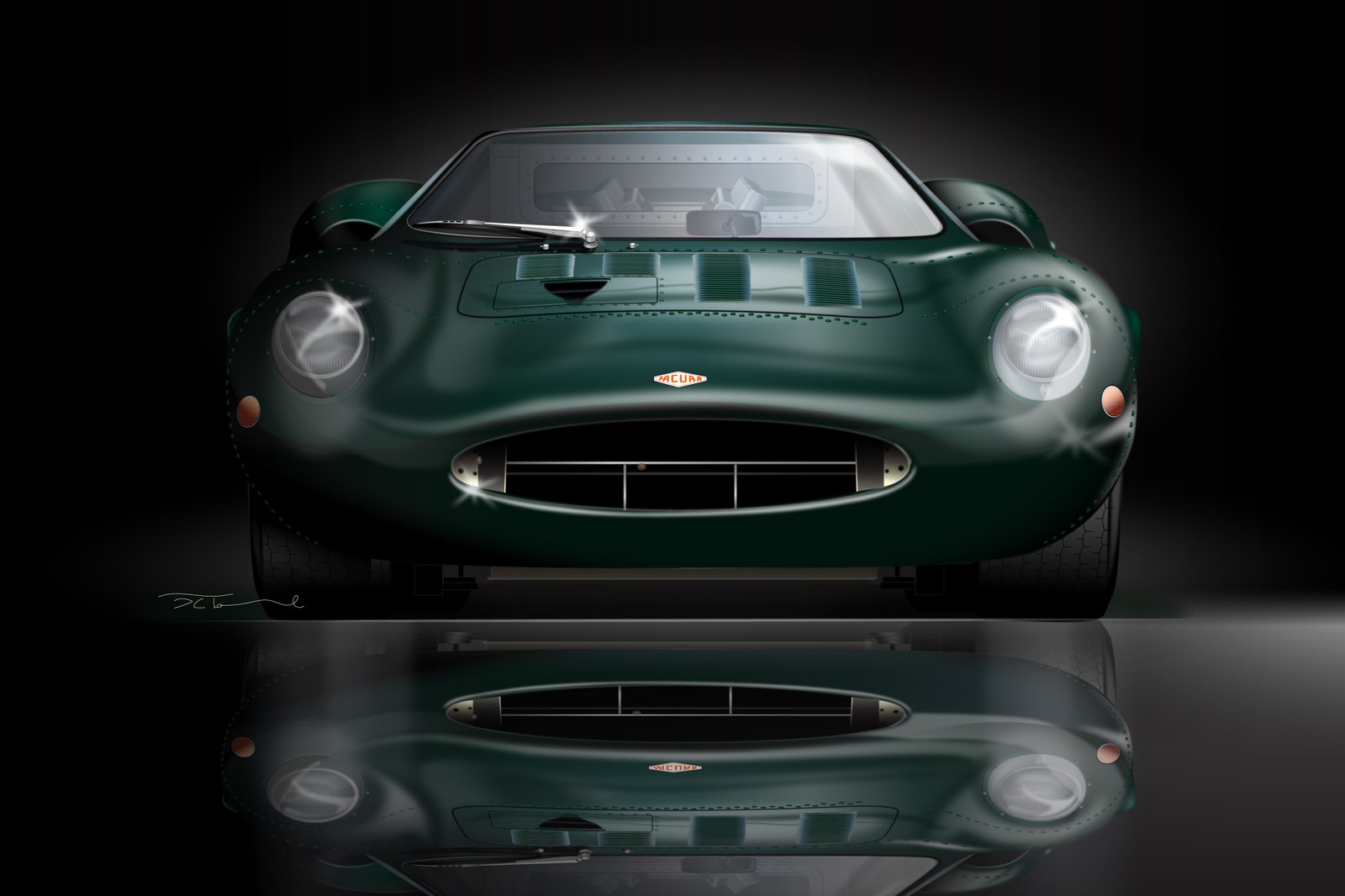 When my friend Ken Fleming, sports car enthusiast, and avid collector of my art calls me completely unsolicited, it almost always means I’m about to draw something I might not otherwise consider doing. Ken’s a persuasive guy, and when the call begins something to the effect of, “I have a project I’d like you to consider”, I know I’m about to agree to draw something unique. So, when the call starts with, “I have a new project…and it’s not a car”, I know I’m headed for the deep end.
When my friend Ken Fleming, sports car enthusiast, and avid collector of my art calls me completely unsolicited, it almost always means I’m about to draw something I might not otherwise consider doing. Ken’s a persuasive guy, and when the call begins something to the effect of, “I have a project I’d like you to consider”, I know I’m about to agree to draw something unique. So, when the call starts with, “I have a new project…and it’s not a car”, I know I’m headed for the deep end.

Stirling Moss posing in the Healey Sports Boat 55. ~ Photograph: Bic Healey
Ask anyone who knows me, and they’ll tell you “He draws cars. Not planes, or motorcycles, or boats. Cars.” It’s not that I don’t like planes, motorcycles, or boats. I’ve flown a plane and I like boats (especially wooden boats), owned and raced motorcycles. It’s just that I don’t feel the same personal affinity for any of them as I do for cars. So, cars it is. I draw cars. Undeterred, Ken soldiered on but wouldn’t tell me what it was he was trying to suck me into. Said he’d give me a call in a couple of weeks to explain. Okie, dokie. It’s your show.
A couple of weeks go by and, right on schedule, I get another call from Ken and this time, he let me know what all the mystery was about. He bought a boat. Not just any boat. A Healey Sports Boat 55 of which only three are left of the original 25 sixteen-foot boats. Ken’s wasn’t just any Healey boat. It was hull #1001—the very first production boat—and he wanted me to illustrate it. Wowza! Now that’s a project I’m interested in.
So now, I’m learning about Healey boats. How Stirling Moss once owned one and sunk it off the Bahamas after hitting a coral reef. How the 16’ model was abandoned in favor of a 14’ boat because it was less expensive to build, and how the components sounded like something sourced from the BMC parts bin which, it turns out, they were. The 1500cc engine was out of an MGA, the steering wheel from a Sprite, and the ignition switch from an Austin-Healey 100.
In addition to being the very first Healey Sport boat, Ken’s ride is one of the few to be set up from the factory for water skiing and came complete with a set of period skis—both double and single models—as well its original trailer. The Healey is in unrestored condition and has spent its whole life on the water. Well cared for, other than some small wear on the transom, it looks like it was just delivered from the factory.

Ken Fleming’s hull #1001, one of three surviving Sport 55s ~ Photograph: Ken Fleming
So, the drawing. Thankfully, unlike many of the cars I’ve drawn, source material was plentiful, and Ken’s archive of Bic Healey materials proved a treasure trove of information. The Sport 55 was also well documented by the previous owner, John May, who included several very useful photographs. The hull and structure were uncomplicated to draw, and I’d previously drawn all the MGAs so sourcing the 1500 engine was not a problem. That pretty much sums up the easy stuff.
I’ve never drawn a marine drive before and all that I knew about them is that there were forward, reverse, and neutral gears. The internals? Who knew? Thankfully Ken’s boat came with a spare engine and drive. He removed the top plate, took a picture of the innards, and sent it along, getting me at least a little further down the road. With the mechanicals resolved, I moved on to the background which proved the most challenging part of the illustration.
I knew I wanted to stay within the family of backgrounds I use for most of my cutaways but didn’t think my usual black gradient was going to work. Then there was that whole reflection thing. With part of the hull below the horizon line, things became complicated. In the end, I went with a two-tone aqua and sky-blue background, showed the hull below the water line, and reflected the boat in the “water”, much like I reflect the cars in my other work. I’m happy with the result. Equally happy that Ken’s Healey Sport 55 is my first, last, and only marine illustration.


